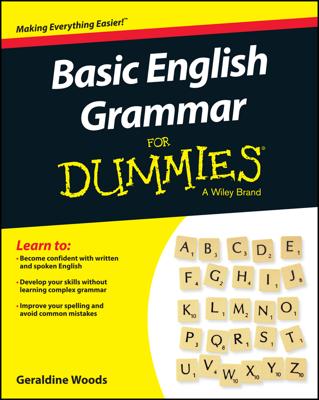English has two ways of creating comparisons, but you can’t use them together and they’re not interchangeable. You can add -er or -est or use more, more, less or least. Take a close look at the comparisons in these sentences:
Roger’s smile is more evil than Michael’s, but Michael’s giggle sounds cuter.
Eggworthy searched for the least efficient sports utility vehicle, believing that global warming is less important than having the raciest image in the parking lot.
Betsy’s most recent symphony was less successful than her earlier composition.
Anna’s older sister is an even greater mathematician than Anna herself, though Anna has the edge in geometry.
Lulu’s latest tattoo is grosser than her first, but Lulu, not the shyest girl in the class, is looking for the most extreme design for her next effort.
What did you notice about the comparisons in the preceding sample sentences? Here’s the stripped-down list: more evil, cuter, least efficient, less important, raciest, most recent, less successful, earlier, older, greater, grosser, latest, shyest, most extreme.
Some of the comparisons were expressed by adding -er or -est, and some were expressed by adding more, most, less, or least to the quality that’s being compared. How do you know which is appropriate? (Or, to use a comparison, how do you know which is better?) The dictionary is the final authority, and you should consult one if you’re in doubt about a particular word. However, there are some general guidelines:
Add -er and -est to most single-syllable words.
If the word already ends in the letter e, don’t double the e by adding -er or -est. Just add -r or -st.
-Er and -est endings are not usually appropriate for words ending in -ly.
The following table is a chart of some common descriptions of Lola, with both the -er and -est forms.
| Description of Lola | -ER form | -EST form |
|---|---|---|
| able | abler than Lulu | ablest of all the budding scientists in her atom-splitting class |
| bald | balder than an eagle | baldest of the models |
| cute | cuter than an elf | cutest of all the assassins |
| dumb | dumber than a sea slug | dumbest of the congressional candidates |
| edgy | edgier than caffeine | edgiest of the atom splitters |
| friendly | friendlier than a grizzly bear | friendliest person on the block |
| glad | gladder than the loser | gladdest of all the lottery winners |
| heavy | heavier than a "before" ad for a diet book | heaviest of all the sumo wrestlers |
| itchy | itchier than she was before she sat in poison ivy | itchiest of all the patients in the skin clinic |
Notice that when the last letter is y, you must often change the y to i before you tack on the ending.
The following table contains even more descriptions of Lola, this time with more, less, most, and least added:
| Description of Lola | More/Less form | Most/Least form |
|---|---|---|
| (Lola runs) jerkily | more jerkily than the old horse | most jerkily of all the racers |
| knock-kneed | less knock-kneed than an old sailor | least knock-kneed of all the beauty pageant contestants |
| lily-livered | less lily-livered than the saloon owner in an old movie | least lily-livered of all the florists |
| magnificent | more magnificent than a work of art | most magnificent of all the ninjas |
| notorious | more notorious than a princess | most notorious of the florists |
| oafish | less oafish than the young prince | least oafish of all the cab drivers |
| prune-faced | less prune-faced than her teacher | least prune-faced of the grammar students |
| queenly | more queenly than Queen Elizabeth | most queenly of all the models |
| rigid | less rigid than a grammarian | least rigid of the traffic cops |
These two tables give you a clue about another important comparison characteristic. Did you notice that the second column is always a comparison between Lola and one other person or thing? The addition of -er or more or less compares two things. In the last column of each chart, Lola is compared to a group with more than two members. When the group is larger than two, -est or most or least creates the comparison and identifies the extreme.
To sum up the rules:
Use -er or more/less when comparing only two things.
Use -est or most/least when singling out the extreme in a group that is larger than two.
Never combine two comparison methods, such as -er and more.

